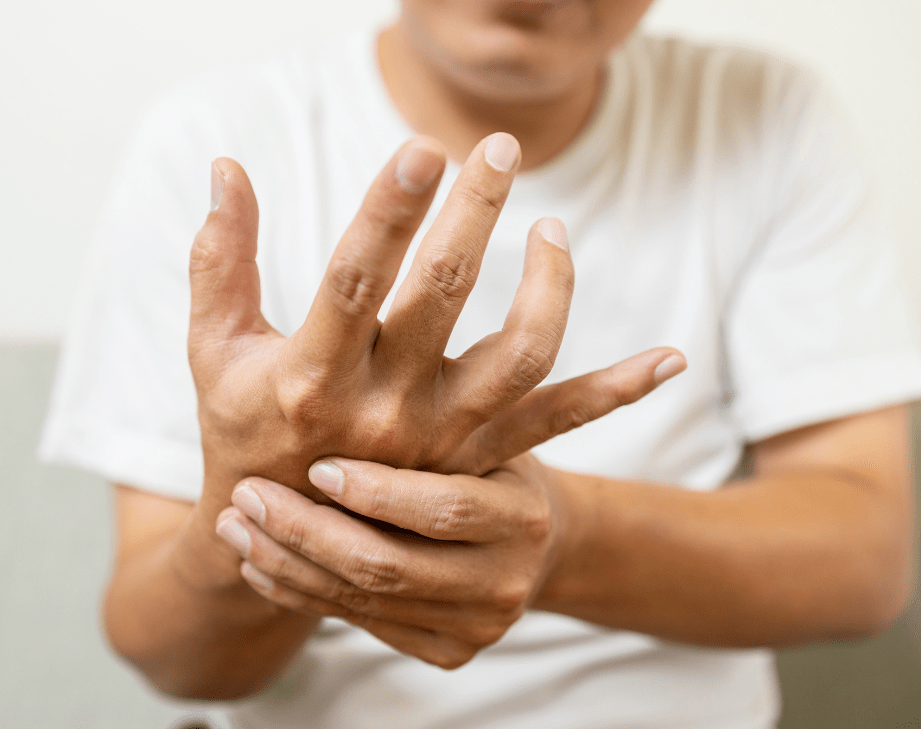

Parkinson’s disease | Insight
Introduction
Parkinson’s disease is a progressive neurological condition which sees parts of the brain become increasingly damaged over many years.
People with Parkinson’s do not have enough of the chemical dopamine in their brains, because some of the nerve cells which produce it have died.
There are more than 145,000 people living with Parkinson’s disease in the UK, and it is the fastest-growing neurological condition in the world.
Key takeaways for HR professionals:
- Around one-in-500 people are thought to be affected by Parkinson’s
- The primary symptoms are involuntary shaking (tremors), slow movement and muscular stiffness
- Symptoms usually develop after the age of 50
- However, one-in-20 Parkinson’s patients first experience symptoms before they reach 40
- Men are slightly more likely to get the condition than women
- There is no cure, but treatment can reduce symptoms and prolong life to near-normal length
- It is usually treated with medication, physiotherapy and occupational therapy
- Disability legislation may apply
- Consider an occupational health referral to obtain a bespoke assessment with independent advice
- Adjustments may be required to support your employee, taking into account their role and the nature and severity of their symptoms - physical, psychological and cognitive
- The disease can fluctuate and progress over time, so this should be taken into consideration when making adjustments or decisions within the workplace
Condition overview
Parkinson’s is caused by the loss of nerve cells in a part of the brain called the substantia nigra – which leads to a reduction in the amount of dopamine in the brain.
Dopamine plays an important role in regulating bodily movement, and a reduction in dopamine is the reason that many of the characteristic symptoms of Parkinson’s are exhibited.
The cause of this loss of nerve cells is unclear, however most experts believe it can be attributed to a combination of genetic and environmental factors.
The three main symptoms associated with Parkinson’s disease are:
- Involuntary shaking of particular parts of the body (tremors)
- Slow movement
- Stiff and inflexible muscles
Sufferers can also experience a range of other symptoms, physical and psychological.
These include:
- Depression and anxiety
- Balance problems (potentially increasing the risk of falls)
- Loss of smell (anosmia)
- Sleeping problems (insomnia)
- Cognitive impairment (disturbance of memory, thinking and/or language abilities)
Cognitive disturbances can arise at any time in the course of Parkinson’s disease, and vary widely in severity.
The first port of call for those concerned they might have Parkinson’s is usually a GP, who will ask relevant questions and refer to a specialist for tests if required.
Treatment
There is no cure for Parkinson’s disease, but treatments are available which can reduce the main symptoms and support patients in maintaining a good quality of life.
Treatment is often not required in the early stages of the illness, when symptoms are mild, but there are several options when it progresses. These include physiotherapy and/or occupational therapy, medication and, in some cases, brain surgery.
Even if treatment is not required initially, patients will still have regular appointments with a specialist to monitor the progress of the condition.
Physiotherapy
Physiotherapists work with Parkinson’s patients to relieve muscle stiffness and joint pain via manipulating them into movement and exercise.
The aim is to improve walking and flexibility, as well as increasing fitness levels and patients’ ability to manage everyday life.
Occupational therapy
Occupational therapists can help patients to find practical solutions for the areas of everyday life which prove challenging. These might include getting dressed, bathing or going to the local shops.
They can also help ensure that patients’ homes are safe, enabling them to maintain their independence for as long as possible.
Medication
Medication can alleviate the main symptoms of Parkinson’s, such as tremors and movement problems. Not all are useful for everyone, and each has different short- and long-term effects. The three main types commonly used are levodopa, dopamine agonists and monoamine oxidase-B inhibitors.
Surgery
While most people with Parkinson’s disease are given medication, a type of surgery called deep brain stimulation is used in some cases. It involves surgically implanting a pulse generator (like a heart pacemaker) into the chest wall - connected to a fine wire (or two) under the skin. A tiny electric current then runs through the wire and stimulates the affected parts of the brain. This can ease symptoms for some patients.
Prognosis
As Parkinson’s progresses, symptoms can get worse, and it can become increasingly difficult to carry out everyday activities without help.
Many patients respond well to treatment and will only have mild-to-moderate disability; however, a minority can become more severely disabled over time.
While Parkinson’s doesn’t directly cause sufferers to die, it can place great strain on the body – increasing vulnerability to serious and life-threatening infections.
However, while there is no cure for Parkinson’s, the treatments outlined above can significantly prolong life expectancy and improve quality of life for those diagnosed with the condition.
Parkinson's disease at work
As Parkinson’s progresses, symptoms can get worse, and it can become increasingly difficult to carry out everyday activities without help.
Many patients respond well to treatment and will only have mild-to-moderate disability; however, a minority can become more severely disabled over time.
While Parkinson’s doesn’t directly cause sufferers to die, it can place great strain on the body – increasing vulnerability to serious and life-threatening infections.
However, while there is no cure for Parkinson’s, the treatments outlined above can significantly prolong life expectancy and improve quality of life for those diagnosed with the condition.
For example, if they are required to climb ladders, but stiffness and impaired mobility make this difficult and potentially unsafe, then they should be restricted from this activity.
It is also important to consider how the condition may fluctuate over time and progress. An employee may be fit now, but this may change over time.
Anyone diagnosed with Parkinson’s must notify the DVLA. They can continue to drive while safe vehicle control is maintained at all times. But if the individual’s condition is disabling or there is clinically significant variability in motor function, the licence will be refused or revoked.
If driving is not impaired, licensing will be considered subject to satisfactory medical reports. A licence may be issued subject to regular review.
This area is important if an employee drives for work or relies on their car to commute. An employee’s specialist will usually advise them on these issues.
Other adjustments to consider might include:
- Making changes to the building or the employee’s location within the building, such as a desk near hygiene facilities to minimise the need to walk around
- Offering more flexibility with working hours to fit around when symptoms are less prominent (some people can find that certain times of day are better for them, or feel tired as the day wears on), or to avoid rush hour travel on public transport
- Providing or modifying equipment - such as computer adaptations, large-button telephones or adjustable chairs
- Working from home
- Temporarily changing duties to allow the employee to concentrate on the things they can do (e.g. catching up on administrative tasks or desk-based work)
- Restriction from certain tasks may be required if physically demanding or safety critical
Talk to your employee about what they feel might help, and support them to attend follow-up medical appointments.
Consider involving other services such as Access to Work. The government-run scheme is a useful source of support - and may be able to offer funding for measures such as adaptive equipment or taxis to and from work.
Consider a work stress-risk assessment if required. Recognise the staff member may be at higher risk of sickness absence due to this condition. Equality legislation should be taken into consideration when applying management policies.
>> A referral to occupational health can offer a bespoke assessment with independent advice relating to your employee
The above is not a comprehensive list of recommendations. What is reasonably practicable for an employer will vary depending on a number of factors



